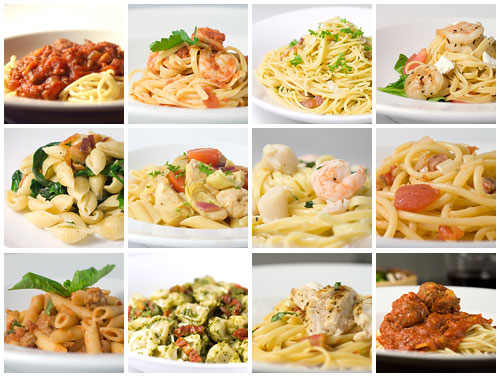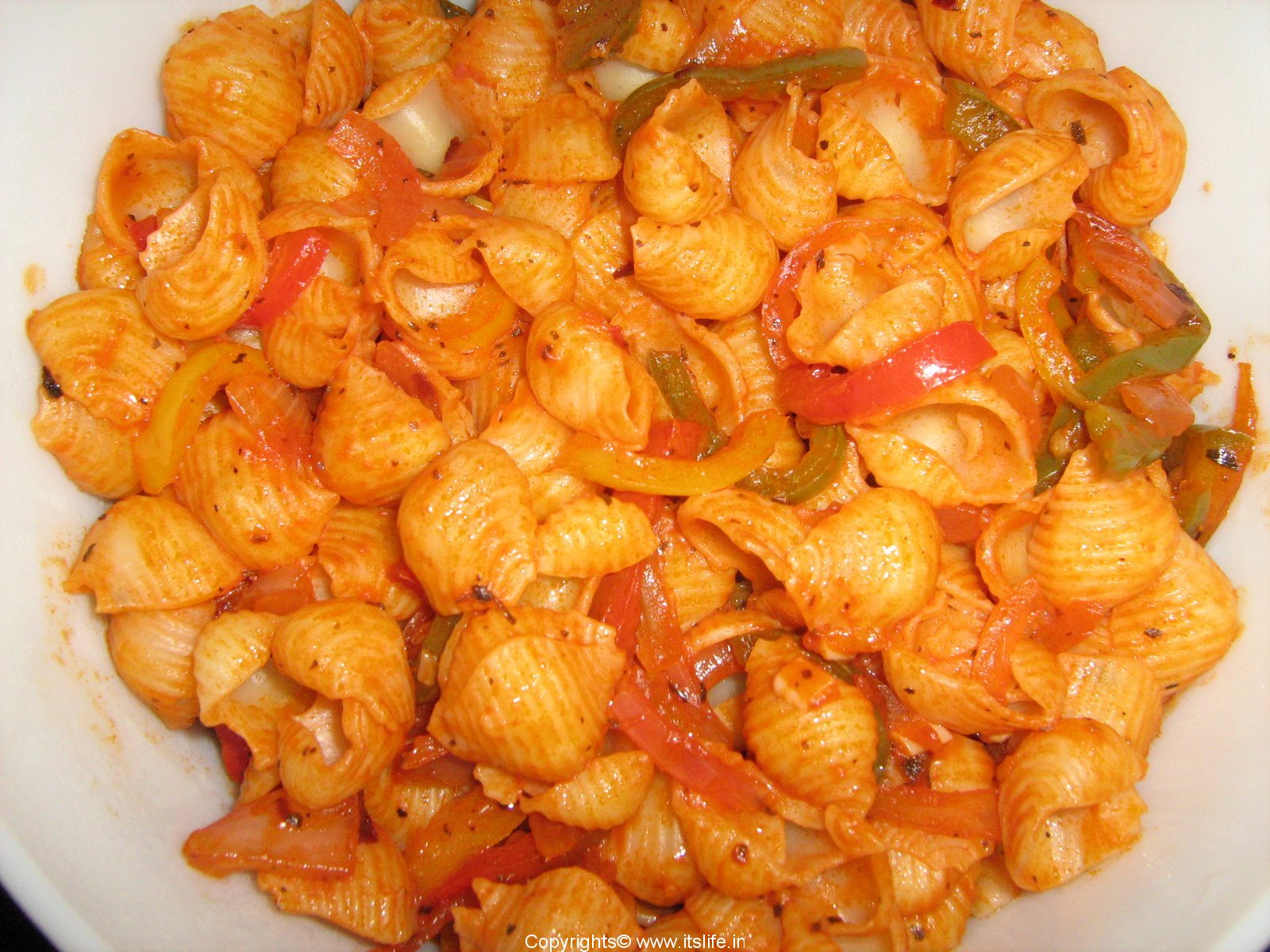Recipe For Pasta Biography
Pasta manufacturing machines were made since the 1600s across the coast of Sanremo. The extrusion press produced large amounts of uniform pastas. The consistency of shapes and texture of the pasta manufactured by the extrusion press is believed to be superior to hand made pasta. This technology has spread to other areas including Genoa, Apulia, Brindisi, Bari, and Tuscany. By 1867, Buitoni Company in Sansepolcro, Tuscany in the upper Tiber Valley became one of the most successful and well-known pasta manufacturers in the world.It is to be noted that the idea of using tomato sauce to give pasta its flavour was revolutionary since it was originally eaten plain. It was eaten with the hands as only the wealthy could afford eating utensils. The consumption of pasta has changed over time; it was once a small, simple item, but it is now often eaten in much larger portions and as part of complex, sophisticated dishes. Factors such as low prices and ease of cooking contribute to the growing popularity of this staple item.The art of pasta making and the devotion to the food as a whole has evolved since pasta was first conceptualized. “It is estimated that Italians eat over sixty pounds of pasta per person, per year, easily beating Americans, who eat about twenty pounds per person.” Pasta is so beloved in the nation of Italy that individual consumption exceeds the average production of wheat of the country; thus Italy frequently imports wheat for pasta making. In contemporary society pasta is ubiquitous, and individuals can find a variety of types in local supermarkets. With the worldwide demand for this staple food, pasta is now largely mass-produced in factories and only a tiny proportion is crafted by hand. However, while pasta is made everywhere, “the product from Italy keeps to time-tested production methods that create a superior pasta”.Pasta was originally solely a part of Italian and European cuisine owing to its popularity there. With an increase in popularity on a world-wide scale, pasta has crossed international borders and is now a popular form of fast food and a staple in North America and elsewhere. This is due to the great amount of Italian immigration into Canada and the United States around the beginning of the 20th century. Similarly an immense immigration of Italians into South Africa ensured that spaghetti and meatballs became an essential part of South African cuisine.since the time of Cato, basic pasta dough has been made mostly of wheat flour or semolina,[4] with durum wheat used predominantely in the South of Italy and soft wheat in the North. Regionally other grains have been used, including those from barley, buckwheat, rye, rice, and maize, as well as chestnut and chickpea flours. In modern times to meet the demands of both health conscious and coeliac sufferers the use of rice, maize and whole durum wheat has become commercially significant. Grain flours may also be supplemented with cooked potatoes.Beyond hens' eggs and water, liquids have included duck eggs, milk or cream, olive or walnut oil, wine, ink from octopus, squid or cuttlefish, and even pigs' blood. Other additions to the basic flour-liquid mixture may include vegetables purees such as spinach or tomato, mushrooms, cheeses, herbs, spices and other seasonings. While pastas are, most typically, made from unleavened doughs, the use of yeast-raised doughs are also known for at least nine different pasta forms.Fresh pasta is usually locally made with fresh ingredients unless it is destined to be shipped, in which case consideration is given to the spoilage rates of the desired ingredients such as eggs or herbs. Furthermore, fresh pasta is usually made with a mixture of eggs and all-purpose flour or “00” low gluten flour. Since it contains eggs, it is more tender compared to dried pasta and only takes about half the time to cook. Delicate sauces are preferred for fresh pasta in order to let the pasta take front stage.Fresh pastas do not expand in size after cooking; therefore, one and a half pounds of pasta are needed to serve 4 people generously. Fresh egg pasta is generally cut into strands of various widths and thicknesses depending on which pasta is to be made (e.g. fettuccine, pappardelle, and lasagne). It is best served with meat, cheese, or vegetables to create ravioli, tortellini, and cannelloni. Fresh egg pasta is well known in the Piedmont area near the border of France. In this area, dough is only made out of egg yolk and flour resulting in a very refined flavour and texture. This pasta is often served simply with butter sauce and thinly sliced truffles that are native to this region. In other areas, such as Apulia fresh pasta can be made without eggs. The only ingredients needed to make the pasta dough is semolina flour and water, which is often shaped into orecchiette or cavatelli. Fresh pasta for cavatelli is also popular in other places including Sicily. However, the dough is prepared differently: it is made of flour and ricotta cheese instead.Dried pasta can also be defined as factory-made pasta because it is usually produced in large amounts that require large machines with superior processing capabilities to manufacture. Dried pasta is mainly shipped over to farther locations and has a longer shelf life. The ingredients required to make dried pasta include semolina flour and water. Eggs can be added for flavour and richness, but are not needed to make dried pasta. In contrast to fresh pasta, dried pasta needs to be dried at a low temperature for several days to evaporate all the moisture allowing it to be stored for a longer period. Dried pastas are best served in hearty dishes like ragu sauces, soups, and casseroles.nce it is cooked, the dried pasta will usually increase in size by double of its original proportion. Therefore, approximately one pound of dried pasta serves up to four people. The way to create the finest dried pasta is by mixing golden semolina flour, ground from durum wheat, with water. Good quality dried pasta is identified by its slight rough surface and compact body that helps maintain its firmness in cooking, since it swells considerably in size when cooked.Pasta is generally served with some type of sauce; the sauce and the type of pasta are usually matched based on consistency and ease of eating. Northern Italian cooking uses less tomato sauce, garlic and herbs. In Northern Italy white sauce is more common. However Italian cuisine is best identified by individual regions. Pasta dishes with lighter use of tomato are found in Trentino-Alto Adige and Emilia Romagna. In Bologna, the meat-based Bolognese sauce incorporates a small amount of tomato concentrate and a green sauce called pesto originates from Genoa. In Central Italy, there are sauces such as tomato sauce, amatriciana, arrabbiata and the egg-based carbonara. In Tuscany and Umbria pasta is often served alla carrettiera (a tomato sauce spiked with peperoncini hot peppers).Tomato sauces are also present in Southern Italian cuisine, where they originated. In Southern Italy more complex variations include pasta paired with fresh vegetables, olives, capers or seafood. Varieties include puttanesca, pasta alla norma (tomatoes, eggplant and fresh or baked cheese), pasta con le sarde (fresh sardines, pine nuts, fennel and olive oil), spaghetti aglio, olio e peperoncino (literally with garlic, [olive] oil and hot chili pepper.
Recipe For Pasta Recipe Of Pasta In Urdu By Chef Zakir In Hindi Salad With White Sauce In Urdu In Indian Style In Red Sauce Photos
Recipe For Pasta Recipe Of Pasta In Urdu By Chef Zakir In Hindi Salad With White Sauce In Urdu In Indian Style In Red Sauce Photos
Recipe For Pasta Recipe Of Pasta In Urdu By Chef Zakir In Hindi Salad With White Sauce In Urdu In Indian Style In Red Sauce Photos

Recipe For Pasta Recipe Of Pasta In Urdu By Chef Zakir In Hindi Salad With White Sauce In Urdu In Indian Style In Red Sauce Photos

Recipe For Pasta Recipe Of Pasta In Urdu By Chef Zakir In Hindi Salad With White Sauce In Urdu In Indian Style In Red Sauce Photos
Recipe For Pasta Recipe Of Pasta In Urdu By Chef Zakir In Hindi Salad With White Sauce In Urdu In Indian Style In Red Sauce Photos
Recipe For Pasta Recipe Of Pasta In Urdu By Chef Zakir In Hindi Salad With White Sauce In Urdu In Indian Style In Red Sauce Photos
Recipe For Pasta Recipe Of Pasta In Urdu By Chef Zakir In Hindi Salad With White Sauce In Urdu In Indian Style In Red Sauce Photos
Recipe For Pasta Recipe Of Pasta In Urdu By Chef Zakir In Hindi Salad With White Sauce In Urdu In Indian Style In Red Sauce Photos
Recipe For Pasta Recipe Of Pasta In Urdu By Chef Zakir In Hindi Salad With White Sauce In Urdu In Indian Style In Red Sauce Photos
Recipe For Pasta Recipe Of Pasta In Urdu By Chef Zakir In Hindi Salad With White Sauce In Urdu In Indian Style In Red Sauce Photos










No comments:
Post a Comment